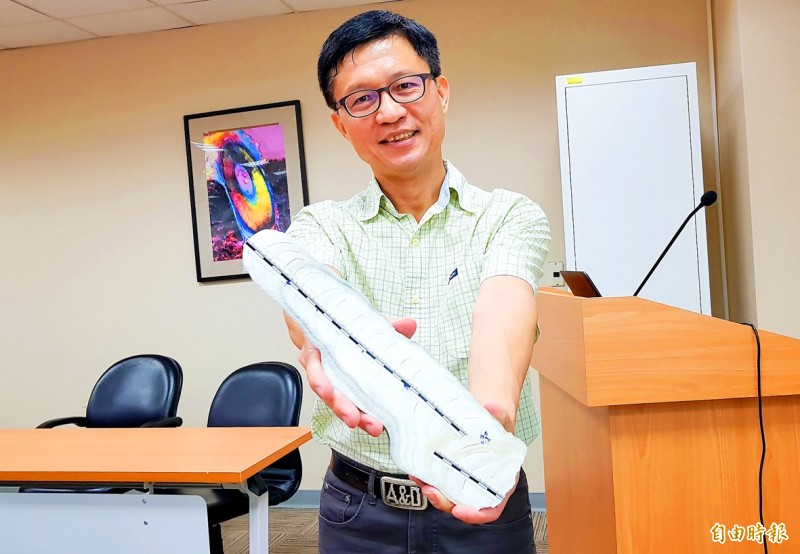《TAIPEI TIMES》 Rainfall variations affect civilizations, study says

National Taiwan University Department of Geosciences professor Shen Chuan-chou yesterday presents a record of rainfall in Southeast Asia over 2,700 years derived from stalagmite samples from Klang Cave in southern Thailand. Photo: Chien Hui-ju, Taipei Times
PRECIPITATION: The study led by NTU professors used uranium-thorium dating techniques to infer changes in rainfall in low-altitude tropics across Southeast Asia
By Lin Chia-nan / Staff reporter
The heat waves and droughts affecting the northern hemisphere might be part of natural phenomena, while the decline of the Khmer empire might be the effect of extensive floods from the late 14th century to early 15th century, a study led by National Taiwan University’s (NTU) Department of Geosciences professor Shen Chuan-chou (沈川州) showed yesterday.
A team led by Shen and Ludvig Lowemark, also a professor at the department, used uranium-thorium dating techniques to study stalagmite samples collected from Klang Cave in southern Thailand, Shen told a news conference at the Ministry of Science and Technology in Taipei.
The team chose the cave due to its high humidity and rich samples, Shen said.
The techniques allowed them to infer the changing rainfalls in low-altitude tropics across Southeast Asia, which is part of the intertropical convergence zone, he said.
Nearly one-third of the world’s total rain fall in the zone, making it the most important biosphere, and therefore any slight changes in its hydrological and geological conditions might have a great impact on global ecology and civilizations, he said.
The rainfall in the zone’s northern part has declined over the past three centuries, while those in its southern part has increased, which might be a result of the variations of solar radiation in summertime, Shen said.
Data collected in Malaysia, Panama, east Africa, the western Pacific and other areas by other research teams presented similar trends, he said.
The stalagmite samples collected in the Thai cave revealed the alternations of droughts and wet periods in Southeast Asia in previous centuries, Shen said.
The extreme precipitations lasting for several decades from the late 14th century to early 15th century were consistent with the time when Angkorian civilization was seriously affected by flooding, which might be the reason behind the Khmer empire’s decline, he said.
The team has detailed their findings in a paper titled “Rainfall variations in central Indo-Pacific over the past 2,700y,” published in the Proceedings of th e National Academy of Sciences of the United States of America on Monday last week.
It involves researchers from 17 agencies in Asia, Australia, the US and Europe, with its lead author being Chinese Academy of Sciences researcher Tan Liangcheng (譚亮成), a former postdoctoral student of Shen.
Having used the dating techniques to study geographical conditions in different areas, Shen said his recent studies focused on areas near the Mediterranean and he is planning to do research in Africa soon.
新聞來源:TAIPEI TIMES

















